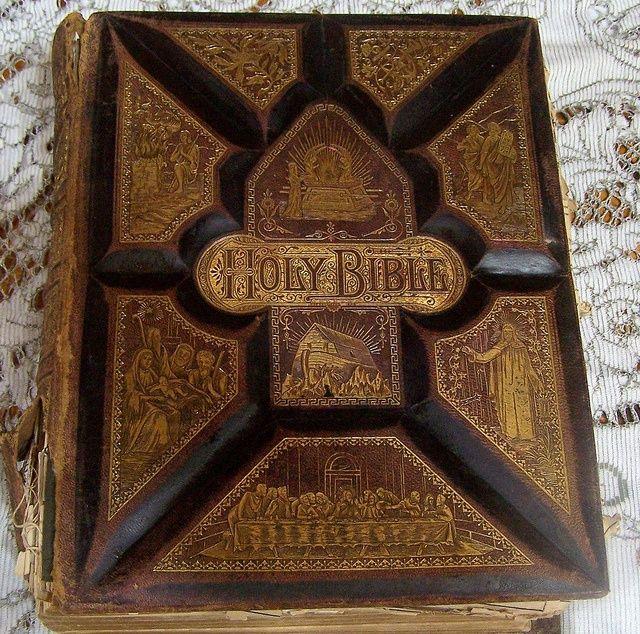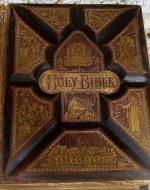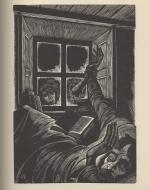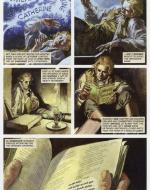Created by Melanie Nolan on Tue, 11/03/2020 - 11:52
Description:
Typical Victorian Bible
The Bible in the Victorian era was a large part of everyday life. This opening image serves as a strong introduction to the idea of the Bible and its relationship to the Brontë sisters and their writing.
"Let me in!" by Fritz Eichenberg for a 1943 Random House edition of Wuthering Heights.
Another common theme in the King James version of the Bible is a feeling of fear and the wrath of God himself. This is something that can be seen in both of the photgraphs here, both in context and in subtext. Even the art choices on the drawing illustrate a darker side to religon, and also mirror the way the Brontes write about love. God and religion is often framed as being a postive thing, but the Bible and the King James version in paticular is tinged with a bit of darkness. Furthermore, the King James version of the Bible is ripe with mistranslations from the orginal Hebrew, which on the surface doesn't connect much to the Brontës, but one of the most common mistranslated words brings to mind a lot of throughts about the supernatural that also connect back to the Brontës. " The probable meaning of "wild-ox, aurochs", is translated in the KJV as "unicorn"; following in this are the Vulgate unicornis and several medieval rabbinic commentators." This brings to mind the connection to the supernatural, fairy tales, ideas of escapism, the Bible, and the Brontes.
"Catherine Earnshaw's Bible." Artwork by John M. Burns for Sean Michael Wilson's Wuthering Heights: The Graphic Novel, Classical Comics, 2011.
Growing up, the Bronte sisters were raised on a specific version of the Bible, specifically the King James version. There are many different versions of the Bible, but the King James one stands out in paticular. The King James version of the Bible is famously "harsh" and uses very ruthless language, making it very memorable, but also hard to adapt to for a modern day reading. The Victorian era may have embraced this harshness, but it makes me wonder if perhaps growing up reading the passion behind these words allowed the Brontës to use such careful and purposful language in their own writing. As we have discussed in class, often during this time, it was hard to have a ton of access to different types of books and literature. By having such intense access to the Bible and the stories behind it, this language used in the bibilcal setting may have also impacted the Brontës in many other ways as well.




